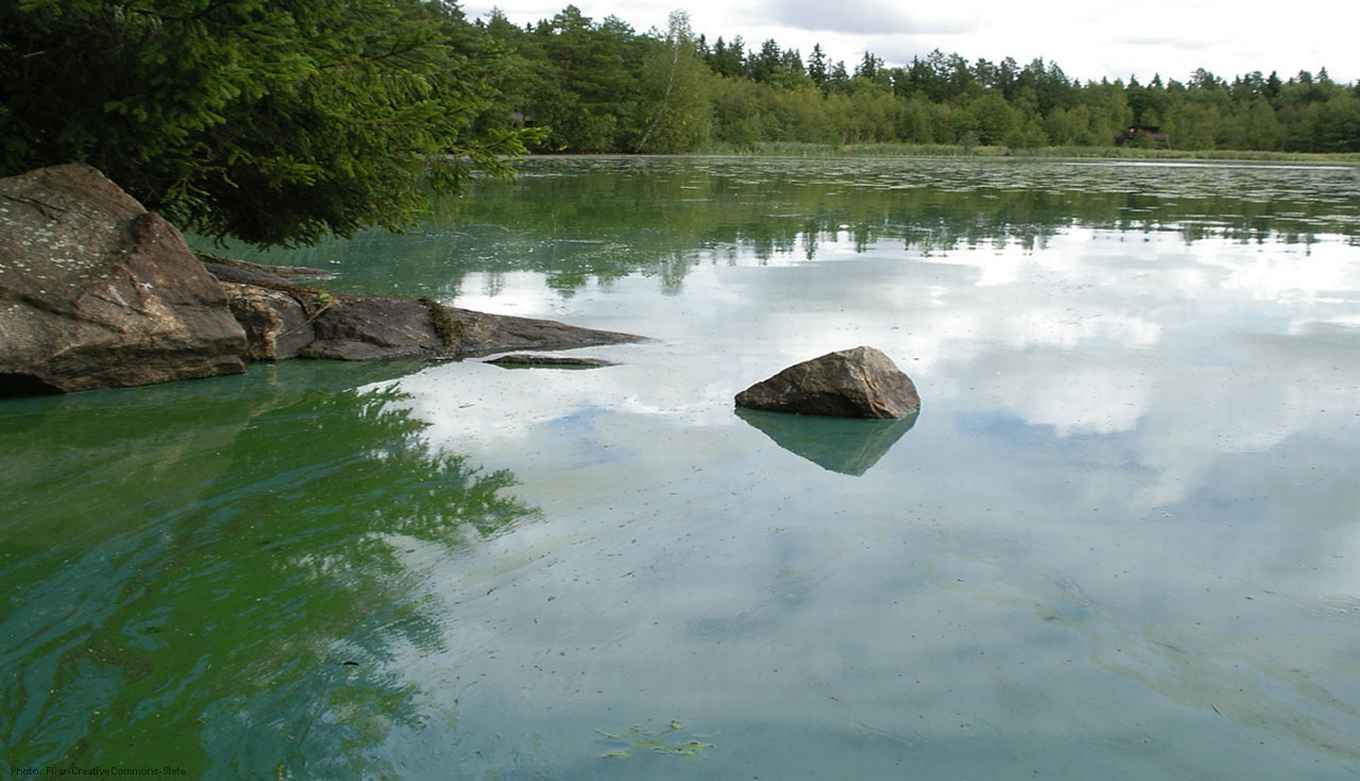Microbes dictate regime shifts causing anoxia in lakes and seas
6 oktober 2017

Regime shifts are abrupt, large and persistent changes in the structure and function of ecosystems triggered by gradual changes in environmental conditions. Regime shifts have been described for a large variety of ecosystems. One type of regime shift may occur in lakes and coastal waters when a rapid depletion of the dissolved oxygen concentration leads to a lack of oxygen, which is detrimental to most aquatic organisms. Although this phenomenon is well known, the underlying mechanisms causing the transition from oxic to anoxic conditions are not fully understood.
Shifts in microbial composition
Scientists from the UvA and the University of Edinburgh developed a mathematical model to investigate interactions between the microbial species composition and the dissolved oxygen concentration. They discovered that lakes can be in two alternative stable states: one in which the lake is rich in oxygen, and another in which it lacks oxygen. Transitions from the oxic to the anoxic state occur in the form of a regime shift. ‘When the oxygen influx is gradually reduced, at first oxygen-producing cyanobacteria and algae still persist and the lake remains in the oxic state’, explains first author Tim Bush. ‘Below a critical threshold, however, sulfate-reducing bacteria and photosynthetic sulfur bacteria take over. These cause an increase in sulfide concentrations, which then kills the cyanobacteria and rapidly flips the lake from an oxic to an anoxic state.’
Reversal to oxic conditions not easy
One of the implications of this regime shift is that a return to oxygen-rich conditions is not easy. The system displays hysteresis. Once the water has turned anoxic, high sulfide concentrations maintained by the anaerobic sulfur bacteria stabilize the anoxic conditions. As a result, returning to the former oxic conditions requires a much larger oxygen influx than the influx that originally brought the system into its anoxic state.
Lakes and seas
The researchers monitored a small lake with seasonal anoxia in the deeper water layers to investigate these model predictions. The lake displayed hysteresis in the transition between oxic and anoxic conditions, with changes in microbial community composition in agreement with the model predictions. Similar phenomena have been observed in eutrophied coastal waters, where anoxic conditions and high sulfide concentrations have led to mass mortalities of fish, molluscs and many other species. The authors indicate that similar oxic-anoxic regime shifts have probably occurred at a global scale in the Earth’s geological past, when vast areas of the ocean became oxygen-depleted during periods of global warming and high atmospheric CO2 concentrations. According to professors Huisman and Muyzer, several aspects are still not fully understood or cannot be quantified in detail. However, these results provide a warning that continued eutrophication and warming of lakes and seas may push these ecosystems beyond a critical tipping point, causing rapid transitions from oxic to anoxic conditions that are not easily reversed.
Funding
This research was supported by the UvA’s Systems Biology research priority area, the European Research Council, the China Scholarship Council and the US Army Research Office.
Publication details
Timothy Bush, Muhe Diao, Rosalind J. Allen, Ruben Sinnige, Gerard Muyzer & Jef Huisman: ‘Oxic-anoxic regime shifts mediated by feedbacks between biogeochemical processes and microbial community dynamics’ in Nature Communications 8 (Article number: 789), 6 October 2017. DOI: 10.1038/s41467-017-00912-x.